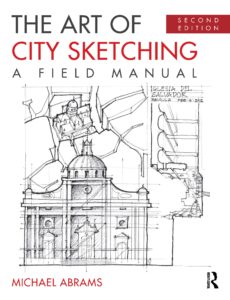THE ART OF CITY SKETCHING: A FIELD MANUAL
When I attended architecture school, my greatest fear was freehand sketching; I truly was NOT an artist. As part of my degree requirements, we had to take a freehand drawing course; I took mine through the School of Art. I certainly did not become an artist but I did begin to fully appreciate the need to “see” and “observe” as an architecture student.
Below is a GREAT resource for you to develop your skill of freehand sketching. Having worked with many architecture students over the recent years, the thought process was that freehand sketching is not needed because of the computer, but actually, freehand sketching will benefit work on the computer.
We strongly consider that you obtain this 2nd edition of The Art of City Sketching: A Field Manual.
_______________________________________________________________________
The Art of City Sketching: A Field Manual guides readers through the process of freehand architectural sketching and explains orthographic, diagrammatic, three-dimensional, and perceptual-type drawings. The book presents hundreds of drawings of historic buildings and urban spaces, examples, and exercises, which help readers develop their drawing skills and employ sketching as an analytical tool. The book is divided into three parts, based on the reader’s skill level: beginner, intermediate, and advanced. As an architect and field sketching instructor, the author shows that through drawing the reader can discover, analyze, and comprehend the built environment.
The new edition of The Art of City Sketching expands on the drawing techniques of the previous version by adding new drawing examples, exercises, and two new chapters—Chiaroscuro and Storyboard. New drawing tips, demonstrations, and composition “do’s and don’ts” will support readers when they illustrate their viewpoint of the city by using simple drawing tools. The book is perfect for architecture, landscape and interior design students, as well as professionals wanting to further develop their drawing skills and sketching aficionados. The lessons in this book will allow readers to mix method with imagination and sensibility.
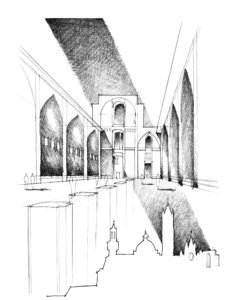
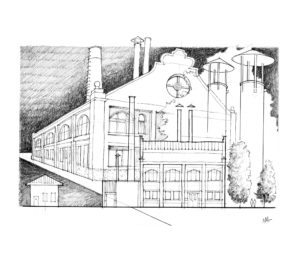
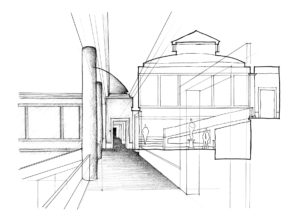
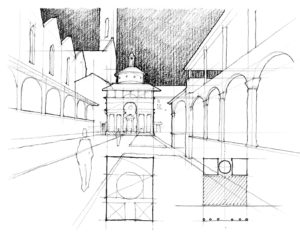
THE IMPORTANCE OF SKETCHING
In an era of selfie sticks and endless photo streams, sketching is one of the best ways to engage and connect with your surroundings in a memorable way. I’ve gone to some beautiful cities and have seen people around me taking hundreds of photos they will probably never look at again. I always encourage my students to put down their camera and pick up their sketchbook. Capturing a place on paper provides a different sensory experience that you will remember so much better than any snapshot. For students, sketching is a tool to help see, observe and think. In the practice, we still use freehand to communicate with our clients and our consultants, even on the job site. The fast-paced thinking of the hand, the eye and the pen happens through sketching. The better you are at it, the better you will be at getting your ideas to your client or your design team.
I first compiled “The Art of City Sketching” seven years ago as a compendium of the tips, tricks and step-by-step instruction he had amassed leading study abroad programs in Barcelona and Northern Italy for Catholic University. With each trip, I was also accumulating thousands of drawings, not just by his hand, but by his students and colleagues. I had piles and piles of these drawings and they were so beautiful; I couldn’t just throw them in the shredder. I needed to showcase the work and more importantly, the power of sketching.
The book is a love letter to my lifelong passion for drawing, which began as a child growing up in Puerto Rico sketching the cobbled streets of Old San Juan, and an homage to the centrality in my career as an architect and teacher. On a deeper level, it’s an investigation of the magic that happens when the eye, the hand and the mind work in concert to translate an idea or an observation onto paper.
Michael Abrams RA-NCARB
Clinical Associate Professor
University of Maryland
School of Architecture, Planning, and Preservation
Discover Architecture – Architecture Summer Program
“Drawn” to Cities? Consider Sketching Them

